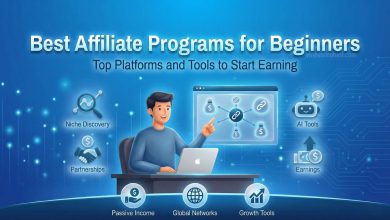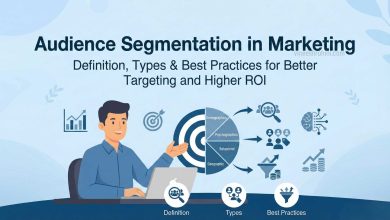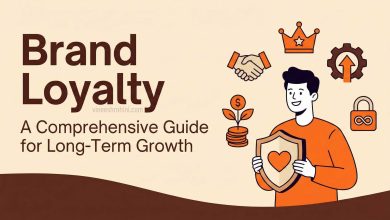How to Get High-Quality Backlinks for SEO in 2025 : Comprehensive Guide
How to Get High-Quality Backlinks : In the ever-evolving landscape of Search Engine Optimization (SEO), one factor remains consistently crucial: backlinks. Backlinks, essentially endorsements from other websites, are a cornerstone of how search engines like G determine the authority and credibility of a webpage. As we move towards 2025, the strategies for acquiring these valuable links are becoming more sophisticated, emphasizing quality, relevance, and user experience.
Table of Contents
This essay delves into the most effective and future-proof methods for building high-quality backlinks, ensuring your website’s success in the competitive digital arena.
Understanding the Importance of Backlinks

Backlinks have long been considered a vital ranking factor by search engines. They act as a “vote of confidence,” signaling to search engines that other websites trust and vouch for the content on your page. The more high-quality backlinks a website has, the higher it tends to rank in Search Engine Results Pages (SERPs). However, the definition of “high-quality” has evolved significantly.
Key Concepts and Terminology
Before diving into specific strategies, let’s define some key terms:
- Backlink: A link from one website to another.
- Anchor Text: The clickable text of a hyperlink.
- Domain Authority (DA): A metric developed by Moz that predicts a website’s ranking potential.
- Domain Rating (DR): A similar metric by Ahrefs, measuring a website’s backlink profile strength.
- Relevance: The degree to which the linking website’s content is related to your website’s content.
- Link Equity (“Link Juice”): The value or authority passed from one page to another through a backlink.
- White Hat SEO: Ethical SEO practices that comply with search engine guidelines.
- Black Hat SEO: Unethical SEO practices that attempt to manipulate search engine rankings.
The Evolution of Backlink Strategies
The approach to link building has transformed drastically over the years. In the early days of search engines, quantity was the primary focus. SEOs engaged in tactics like link farms, spammy directory submissions, and other manipulative practices to inflate their backlink numbers. However, search engines have become much smarter, and these black-hat techniques can now lead to severe penalties.
Also Read : How to Build a Branded eCommerce Store in 2025 ? : Comprehensive Guide
Today, the emphasis is firmly on quality over quantity. A single high-quality backlink from a reputable and relevant website is far more valuable than hundreds of low-quality links from spammy sources. As we approach 2025, this trend will only intensify, with search engines placing even greater importance on the context, relevance, and authority of backlinks.
Factors That Define a High-Quality Backlink in 2025

To effectively build backlinks in 2025, it’s crucial to understand the characteristics of a high-quality link:
- Relevance: The linking website should be closely related to your website’s niche or industry. A link from a relevant site signals to search engines that the link is natural and adds value to users.
- Authority: The linking website should have a high Domain Authority (DA) or Domain Rating (DR). These metrics indicate the website’s credibility and influence. Links from authoritative sites carry more weight and contribute more significantly to your website’s ranking.
- Trustworthiness: Search engines assess the trustworthiness of a website based on factors like its age, security (HTTPS), and history. Links from trustworthy websites are considered more valuable.
- Context: The link should be placed naturally within the content of the linking page. Contextual links that are relevant to the surrounding text are more likely to be seen as valuable by search engines.
- Anchor Text: The anchor text should be relevant to the content of the page being linked to. While keyword-rich anchor text can be beneficial, it’s essential to avoid over-optimization, which can trigger spam filters.
- Placement: Links placed within the main content of a page (editorial links) are generally considered more valuable than links in sidebars, footers, or other less prominent locations.
- Follow/Nofollow Attribute: The “follow” or “nofollow” attribute of a link determines whether link equity is passed to the linked page. “Follow” links pass equity, while “nofollow” links do not. While “nofollow” links still have value (driving traffic, brand awareness), “follow” links are more beneficial for SEO.
- Traffic: Links from websites that receive significant organic traffic are generally more valuable, as they are more likely to drive relevant traffic to your website.
Effective Strategies for Building High-Quality Backlinks in 2025

With the understanding of what constitutes a high-quality backlink, let’s explore the most effective strategies for acquiring them in 2025:
- Create Exceptional, Link-Worthy Content:
- In-Depth Guides and Tutorials: Comprehensive resources that cover a topic in detail are highly valuable and likely to attract backlinks.
- Original Research and Data: Publishing unique research findings, statistics, and data can make your content a valuable source for other content creators.
- Infographics and Visual Content: Visually appealing content, such as infographics, charts, and videos, is more likely to be shared and linked to.
- Interactive Content: Quizzes, calculators, and other interactive tools can generate significant engagement and backlinks.
- “Skyscraper” Content: This strategy involves finding a piece of content that is already performing well for a particular keyword, creating something even better, and then reaching out to websites that link to the original content to suggest your superior resource.
- Guest Blogging and Outreach:
- Target Relevant Websites: Identify websites in your niche that accept guest posts and have a high DA/DR.
- Personalized Outreach: Craft personalized outreach emails that demonstrate your understanding of the target website’s audience and offer valuable content ideas.
- Provide High-Quality Content: Submit well-written, original, and informative guest posts that provide value to the target website’s audience.
- Build Relationships: Guest blogging is not just about getting a link; it’s also about building relationships with other bloggers and influencers in your industry.
- Broken Link Building:
- Find Broken Links: Use tools to identify broken links on relevant websites in your niche.
- Create a Replacement: Create a piece of content that can replace the broken link.
- Reach Out to the Website Owner: Contact the website owner and inform them about the broken link, suggesting your content as a replacement.
- Digital PR and Media Outreach:
- Build Relationships with Journalists: Cultivate relationships with journalists and media outlets in your industry.
- Share Newsworthy Stories: Share press releases and news stories about your company, products, or services that are likely to be picked up by media outlets.
- Offer Expert Commentary: Position yourself as an expert in your field and offer commentary on industry trends and news stories.
- Harness the Power of HARO (Help a Reporter Out):
- Sign Up for HARO: HARO connects journalists with sources for their stories.
- Respond to Relevant Queries: Monitor HARO for queries that are relevant to your expertise and provide valuable insights.
- Get Featured in High-Authority Publications: If your pitch is accepted, you can get featured in high-authority publications and earn valuable backlinks.
- Leverage Local SEO:
- Create and Optimize a G Business Profile: Ensure your G Business Profile is complete, accurate, and optimized with relevant keywords.
- Build Local Citations: Submit your business information to relevant online directories, such as Yelp, Yellow Pages, and industry-specific directories.
- Get Reviews: Encourage satisfied customers to leave positive reviews on your G Business Profile and other review sites.
- Competitor Analysis:
- Identify Competitors’ Backlinks: Use tools to analyze your competitors’ backlink profiles and identify websites that are linking to them.
- Replicate and Improve: Reach out to the websites that are linking to your competitors and offer them a better resource or a more compelling reason to link to your website.
- Internal Linking:
- Create a Logical Site Structure: Organize your website’s content in a logical and hierarchical structure.
- Link to Relevant Content: Link to other relevant pages on your website from within your content.
- Use Descriptive Anchor Text: Use relevant and descriptive anchor text for your internal links.
- Monitor Brand Mentions:
- Track Unlinked Mentions: Use tools to monitor online mentions of your brand, product, or service that do not include a link to your website.
- Reach Out and Request a Link: Contact the website owner and politely request that they add a link to your website.
- Partnerships and Collaborations:
- Collaborate with Other Businesses: Partner with other businesses in your industry to create joint content, host webinars, or cross-promote each other’s products or services.
- Sponsor Events: Sponsor industry events or conferences to get your brand in front of a relevant audience and potentially earn backlinks from event websites.
- Offer Scholarships or Grants: Offer scholarships or grants to students in your field and promote them on your website. Educational institutions often link to scholarship pages.
The Role of AI in Backlink Building

As we move closer to 2025, Artificial Intelligence (AI) is playing an increasingly significant role in SEO, including backlink building. AI-powered tools can help:
- Identify Link Opportunities: AI can analyze vast amounts of data to identify relevant websites and potential link opportunities that might be missed by manual research.
- Personalize Outreach: AI can help craft personalized outreach emails that are more likely to resonate with recipients.
- Create High-Quality Content: AI can assist in the creation of high-quality content, such as articles, blog posts, and even videos, that are more likely to attract backlinks.
- Analyze Backlink Profiles: AI can analyze backlink profiles to identify toxic or low-quality links that need to be disavowed.
Staying Ahead of the Curve
The SEO landscape is constantly changing, and it’s crucial to stay updated on the latest trends and best practices. Here are some tips for staying ahead of the curve:
- Follow Industry Experts: Follow reputable SEO blogs, publications, and experts to stay informed about the latest developments.
- Attend Industry Conferences and Webinars: Attend industry events to network with other SEOs and learn about new strategies.
- Experiment and Analyze: Continuously experiment with different link building strategies and analyze the results to see what works best for your website.
- Adapt to Algorithm Updates: Stay informed about search engine algorithm updates and adapt your link building strategies accordingly.
How to Get High-Quality Backlinks – Conclusion

Building high-quality backlinks is an essential aspect of SEO that will continue to be crucial in 2025 and beyond.
Buy Now : Ecommerce Website With 100 Products
By focusing on creating exceptional content, building relationships, and leveraging innovative strategies, you can acquire the valuable links needed to improve your website’s search engine rankings and drive organic traffic. As the digital landscape evolves, staying informed, adapting to change, and embracing new technologies like AI will be key to success in the world of link building.
Keywords : How to Get High-Quality Backlinks – How to Get High-Quality Backlinks 2025 – How to Get High-Quality Backlinks now , How to Get High-Quality Backlinks new



